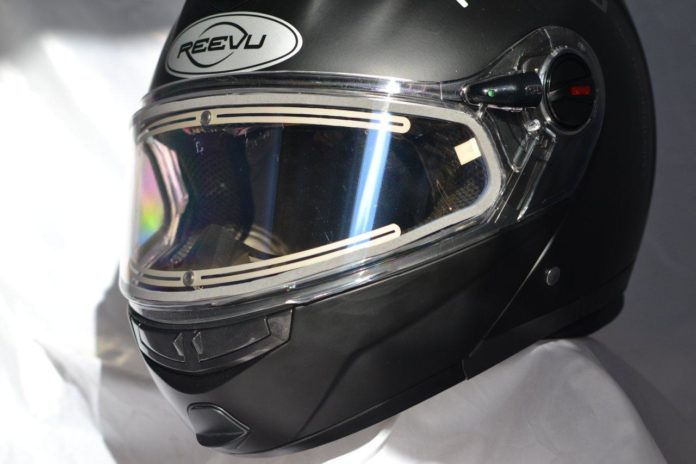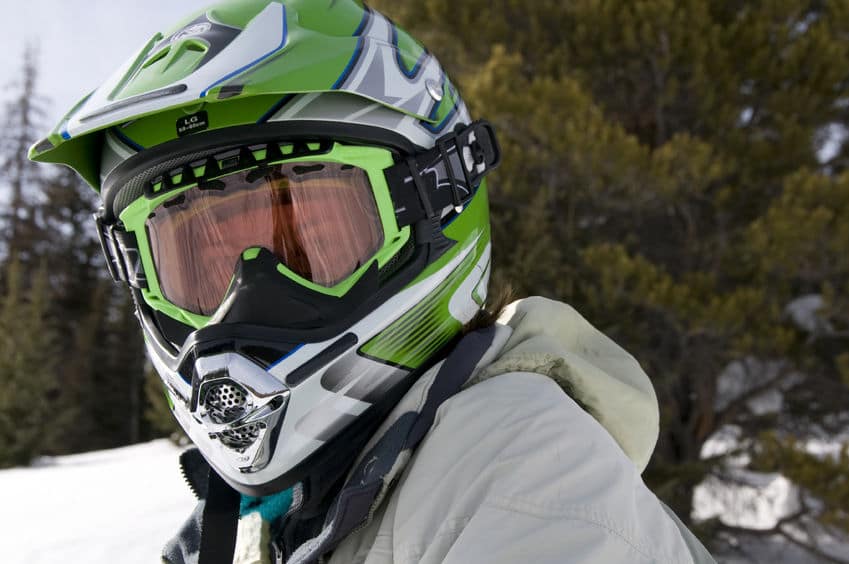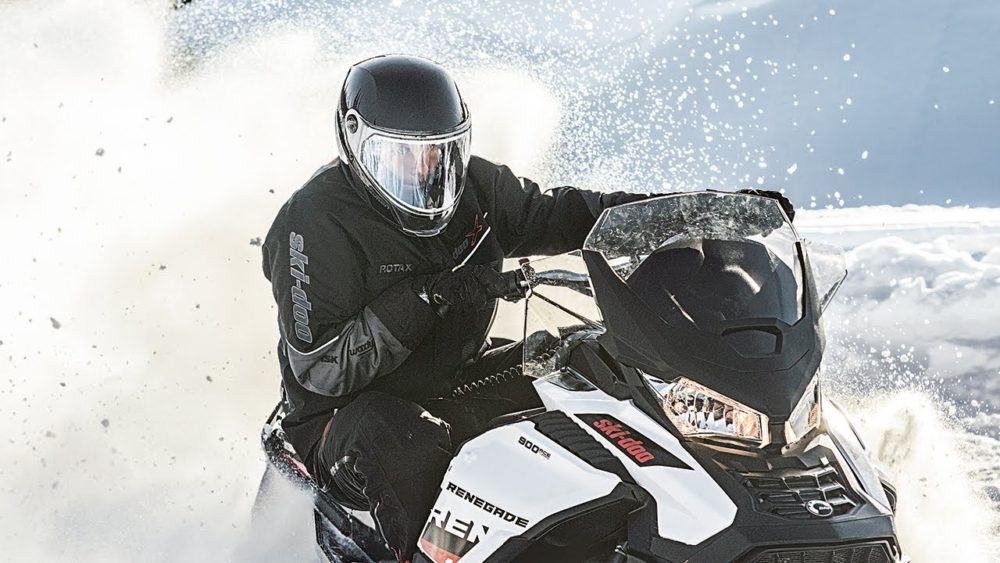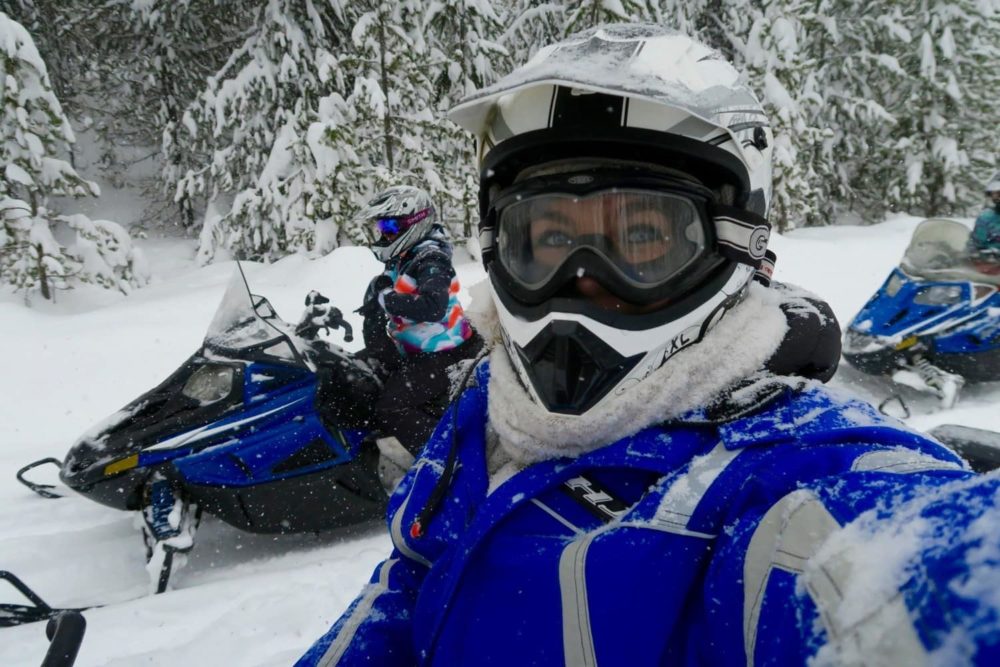
If you have finally decided that you are going to enjoy those heaps of snow this year in a more fun way, you are probably thinking about getting a snowmobile. Who does not love sliding over snow spraying everyone around you, having fun? That’s right, everyone does. Everyone wants to have this kind of an experienced checked off their bucket list.
However, if you plan on riding on such a sled, you will also have to go through all the steps to ensure that you are well protected. You must make sure that every ride you take on this sled will be safer no matter what happens. So, how does one equip themselves with the right gear to feel safe while on a snowmobile? You probably already have the right clothing to endure the high winds and cold weather which means that all that you have left to get is a good helmet.
Since the head and the brain is the most important part of the human body then that means that the helmet is also the most important part of everyone’s riding equipment. Not only will they keep you warm while you are sliding through the snow while the wind is blowing in your face, but they will also ensure that your head stays in one piece if anything bad happens. Whether you hit a tree, get stuck in the mud, hit a rock or if you are hitting branches with your head, you will remain completely safe and healthy.
Thanks to the improvement in this industry, helmets used for snowmobile ridings have been considerably improved which means they will be able to protect you from any kind of situation while looking cool. Every single year they become lighter, safer and look even better.
Now that you understand the value of a helmet and why you cannot cheap out on it if you plan on motor sledding, it is time to get into the specifics of all the different types.
What type of helmet is right for you?

Yes, the exterior design and appearance of your head protector are important, but it is also important to choose it depending on your style of riding. These various types of head protection will offer you different advantages or disadvantages and they also have a huge variation on pricing too.
So, what do you have to focus on when choosing a helmet?
- Make sure that your head fits in it. To correctly check if the head protection fits your head, grab it at the sides with both of your hands and try to shake it front to back and side to side. If you notice that you are easily moving it, then it probably does not fit. With the right size, you won’t notice more than a few centimeters (an inch) of movement.
- Ensure that there is a safety strap. It is also very important to ensure that the helmet you are looking to buy has a safety strap. Without one, your head protection will fly out in mere seconds and leave you unprotected. Give the strap a few tugs after you have fastened to check whether it is sturdy enough to endure anything.
- Consider the weight. This can be a bit confusing at first because weight usually equals the quality, right? Well, yes and no. You will have to find the right balance between both the weight and quality of the head protection, but how does one do that? Most reliable companies strive to make their helmets as light as possible while saving the quality of their products. In other words, the price of it will tell you exactly how quality the materials are.
- Check for safety ratings. Most manufacturers must follow certain safety standards so consumers can easily find out how much a helmet would protect their heads. The rating is usually positioned on the back of it or on the inside.
If you still have trouble deciding what type of helmet you should choose, check out the review over at 10BestRanked.com
Safety Ratings

When it comes to snowmobile riding and helmets, there are only two types of ratings. One is abbreviated “DOT” while the other “SNELL”.
A lot of people believe that the SNELL rating means that those types of helmets will protect you from any kind of collision, but that is simply not true. A SNELL rating means that it will protect you from high-speed related collisions. So, if you are the kind of person who prefers riding on open fields at very high speed then you should definitely get an SNELL helmet.
However, if you are the kind of person who likes to ride on mountain terrains with a lot of rockier areas and snowless areas, you should definitely consider getting a DOT rated head protection. This kind of protection is usually filled with a soft material on the inside that will reduce the strength and shock of the impact.
As the materials both on the outside and inside of the helmet can wear down after some time, we recommend that you consider changing it every five years. If you have suffered from a snowmobile collision in those five years, make sure that you either get a brand new one or send it for inspection. An inspection will tell you whether you should continue to use it in the future.
Full-Face Mask

This is probably one of the most used types of head protection by snowmobile, bicycle and motorcycle riders and there is a good reason for it. They simply are the safest type of head protection you can get and the warmest too. They also have a bit more surface area, so you can easily add any custom design on it if you want to.
Hybrid or Modular Shell
This is also a great choice for people who are getting into snowmobile riding. This type of head protection can easily be modified for either to be a full-face mask or an open-faced one. This is why they are named modular, as you can easily modify it to your needs.








